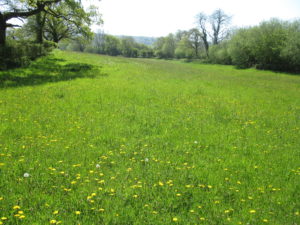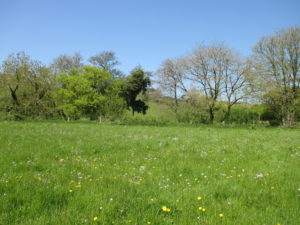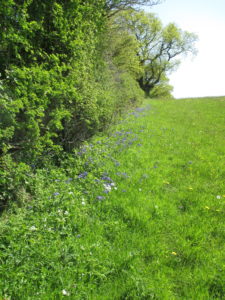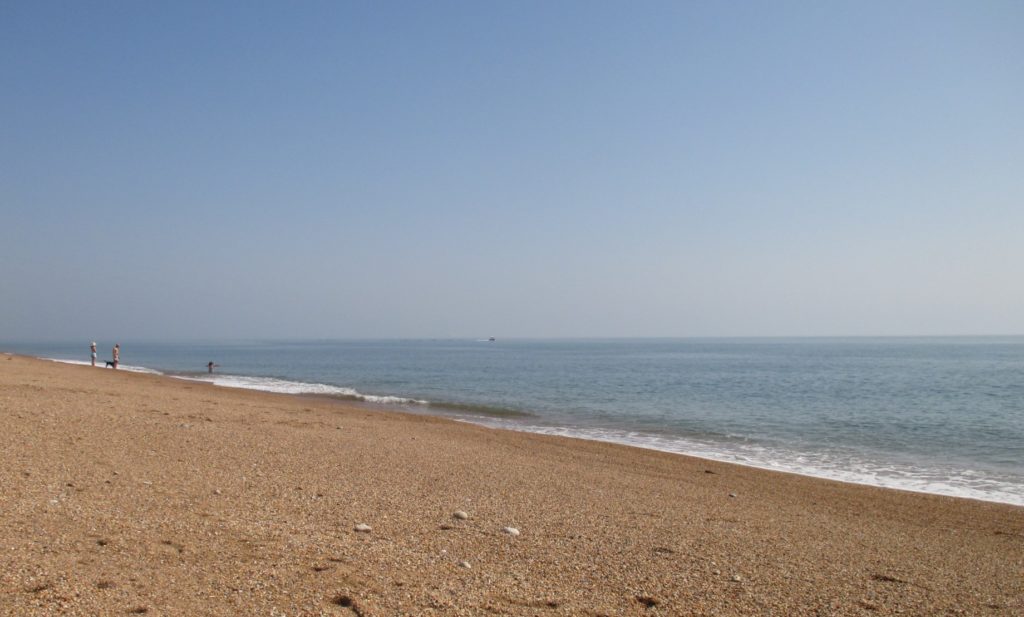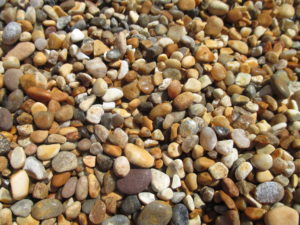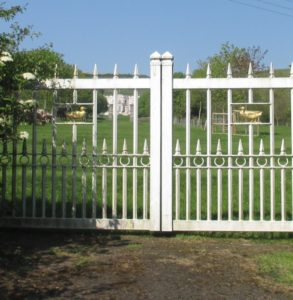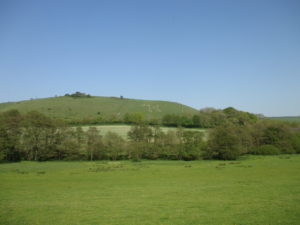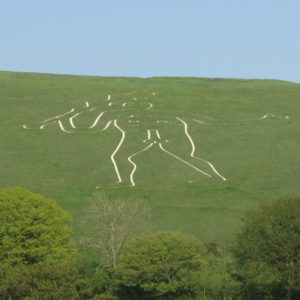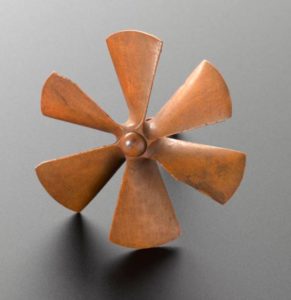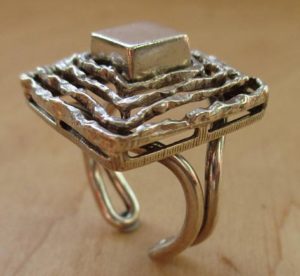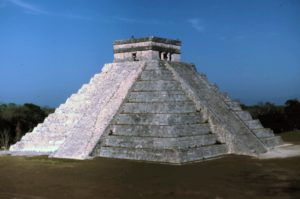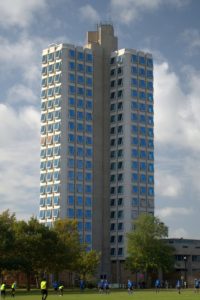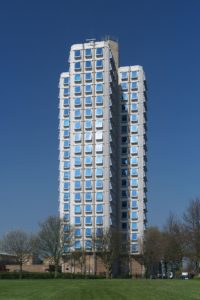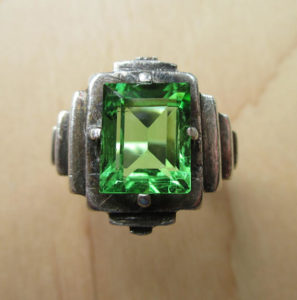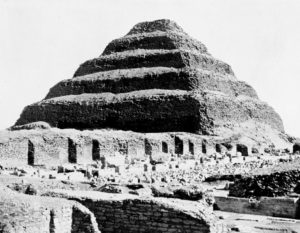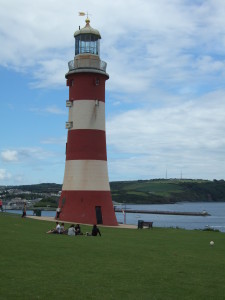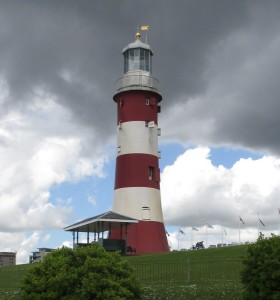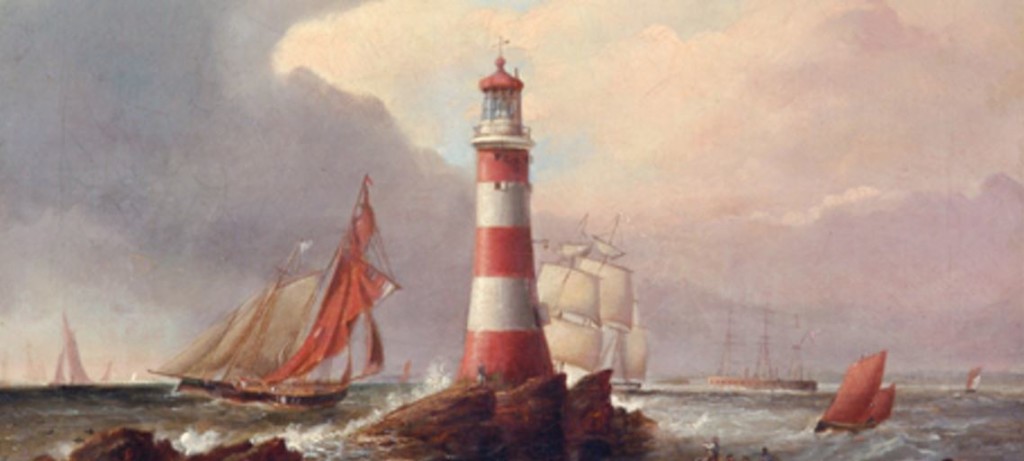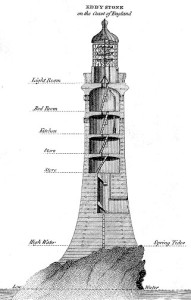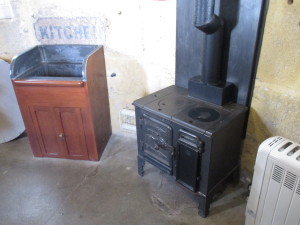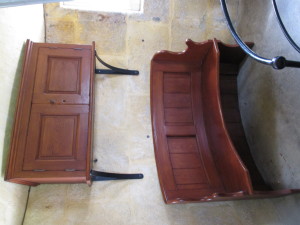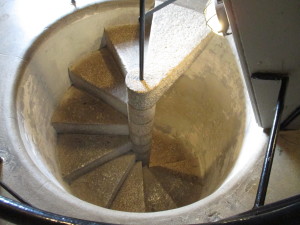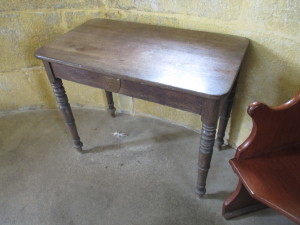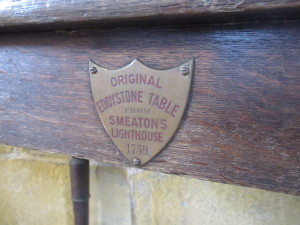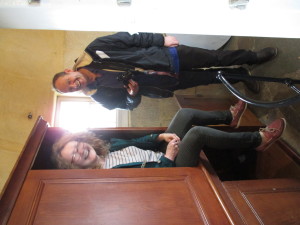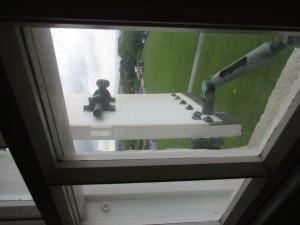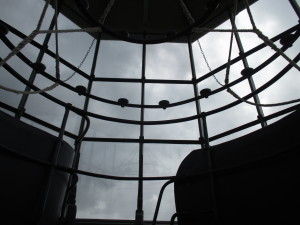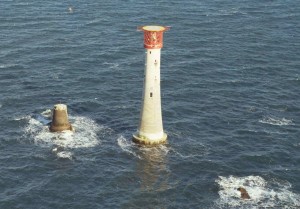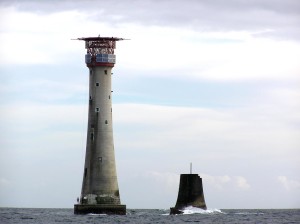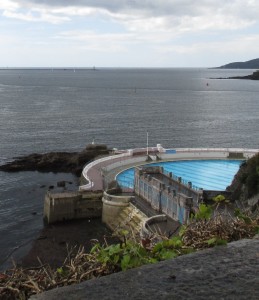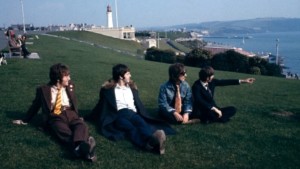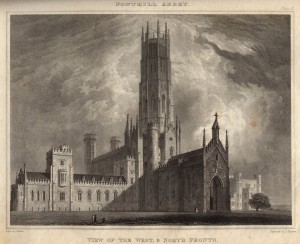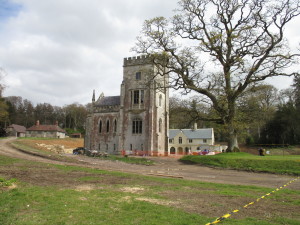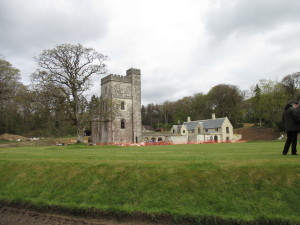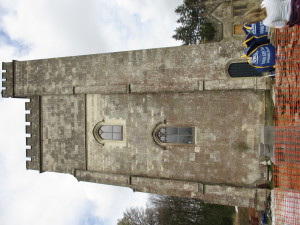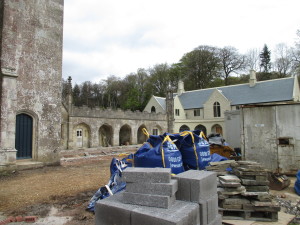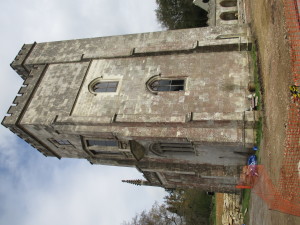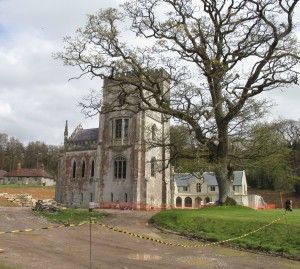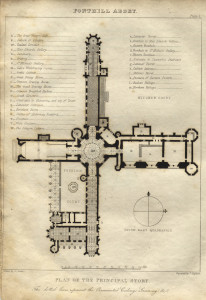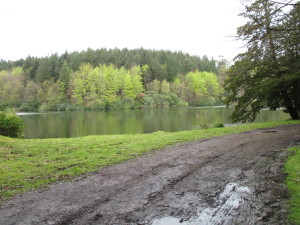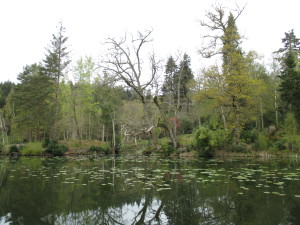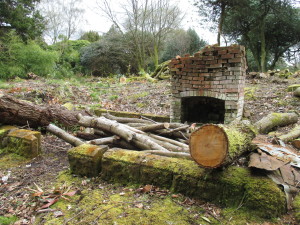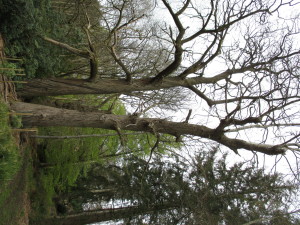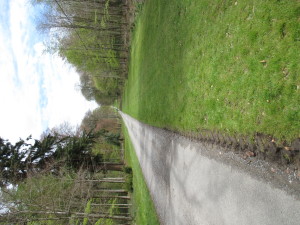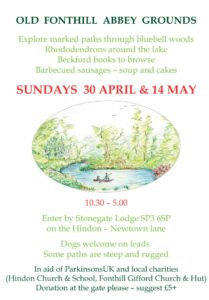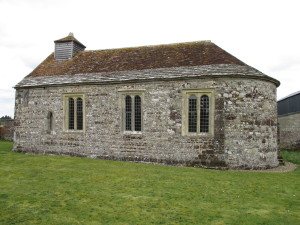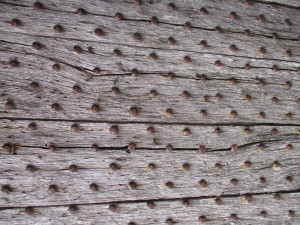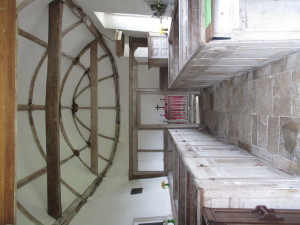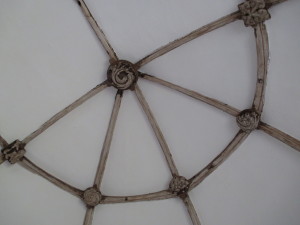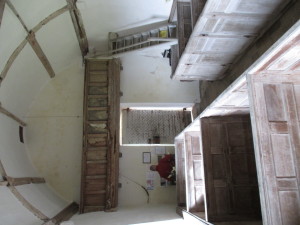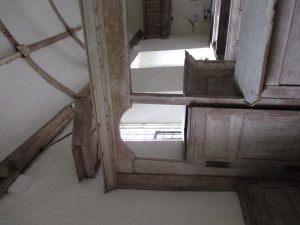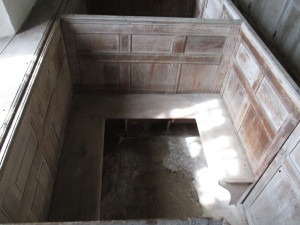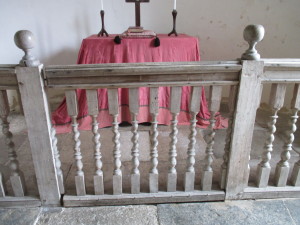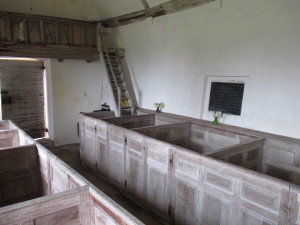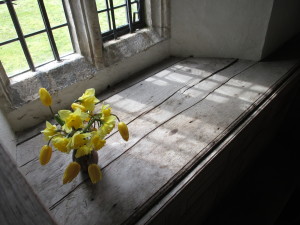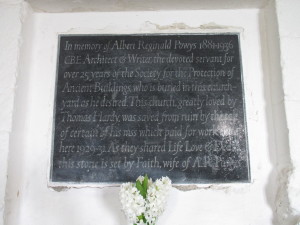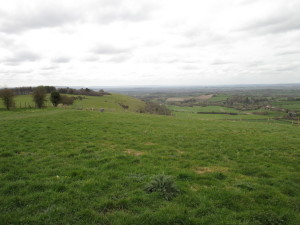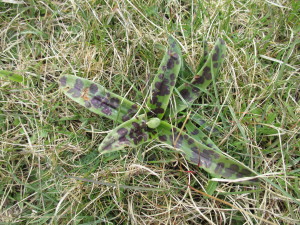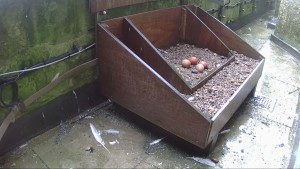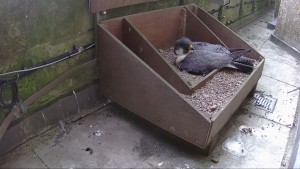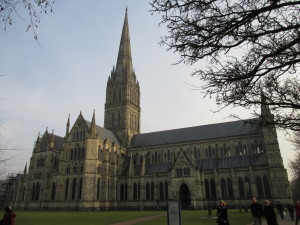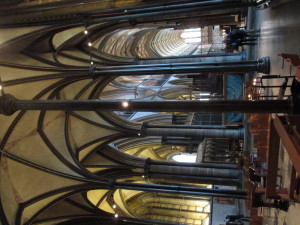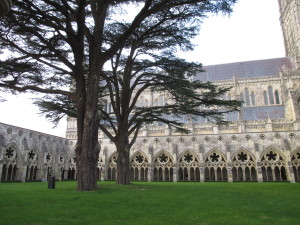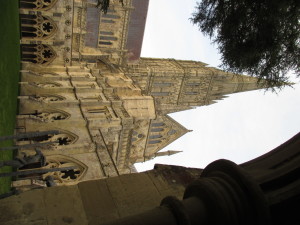Yesterday the weather was so glorious that we headed out first thing for an adventure. We wanted to do a walk along a river, and as the rivers round our way are mainly lacking in public rights of way, we headed to one of our favourite parts of the world, West Dorset. Click on all photos to embiggen/bigify.
Our first port of call was Pilsdon Pen, a hillfort-topped hill very near where my parents used to live. It used to be thought the highest point in Dorset, until a re-survey showed that the neighbouring Lewesdon Hill was a mighty two metres higher.
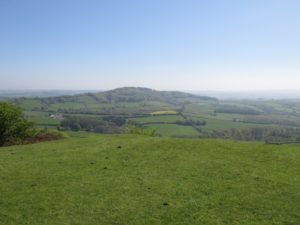
Lewesdon Hill from Pilsdon Pen.
On a really clear day the views are spectacular, but the heat haze made the visibility not so great. Lots of lovely chubby lambs on the hill.
Then we drove on to Whitchurch Canonicorum, and did a short walk along the banks of the River Char, which flows down to the sea at the aptly named Charmouth.
The walk was pretty, but a bit disappointing nature-wise: we only saw five species of butterfly (orange tip, peacock, small white, speckled wood and brimstone), and very few birds, though we did have a brief encounter with a heron. The wild flowers were also rather limited: mainly dandelions, lady’s smock (also known as cuckoo flower), greater stitchwort, bluebells, wild garlic and field buttercups.
Afterwards we went to the village pub, the Five Bells, but as they didn’t have any alcohol-free lager (I know, we’re both on the wagon and needs must when you fancy a cold one!) we went on to the Shave Cross Inn in Marshwood Vale. We’ve been here many times and it’s a lovely pub, but sadly too popular yesterday as we couldn’t get a table to eat. And no alcohol-free beer either, so we contented ourselves with big glasses of fizzy water with ice and a slice of lemon and pretended they were g&ts, sitting in the sunny garden. There’s a lovely old Victorian postbox built in to the side of the pub.
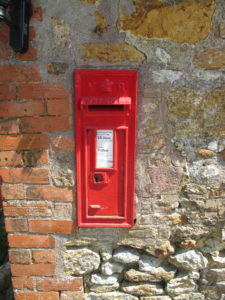
Victorian postbox built in to the side of the Shave Cross Inn. The VR stands for Victoria Regina (Queen Victoria).
Then on to the pretty market town of Bridport, which unsurprisingly was Sunday-shut. We snaffled a supermarket sandwich as a pub lunch anywhere wasn’t going to happen (too busy on this Bank Holiday weekend and too late). We took the coast road eastwards out of Bridport, and stopped at the National Trust-owned Cogden Beach at the western end of Chesil Beach. There were quite a few anglers fishing from the shingle, and a few hardy swimmers. The water was pretty calm and I was tempted, until I went for a paddle. Not warm! One very excitable young woman was swimming and shouting to her friends on the beach ‘I love the sea!’ so happily that it wouldn’t surprise me if she’s grown a mermaid tail by now.
I tried to take an arty-farty photo of the shingle (pea to grape sized here, where at the eastern end of Chesil they are sweet potato sized), but when I looked at it on screen just now it looked like I could have taken the shot of a dumpy bag of gravel at my local Travis Perkins. Not one for Instagram!
Then back in the car and we decided that rather than take the A35, the quick road back to Dorchester, we’d bimble along the road that runs vaguely parallel and to the south of it. I cycled this road back in 1987 (a Sunday cycle) when I was working on the archaeological excavations ahead of the construction of the Dorchester bypass and had bought myself a bicycle so I could see some more of the countryside. It was quite nostalgic visiting again – we drove through Long Bredy, Littlebredy and passed the gateway of a new country house that I remember seeing a tv progamme about many moons ago: Bellamont House, built in the Neo Georgian / Neo Gothic Revival style. We admired their golden duck gates and the longhorn cattle within.
We decided to head home via the Cerne Abbas Giant: he always seems so pleased to see us.

